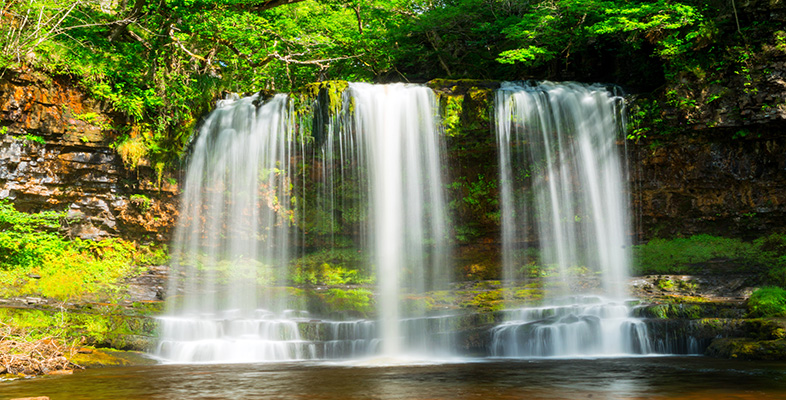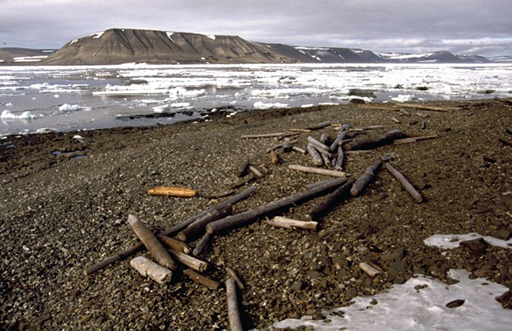2.3 Russian tree trunks in the Arctic
In Northern latitudes, the treeline is often used as a means to define the Arctic region. The ‘treeline’ is a physical boundary of altitude or latitude beyond which trees cannot thrive because of a combination of light availability and temperature that would prevent tree growth.
Although the Arctic is north of the treeline, it is not unusual to find tree trunks in the Arctic regions. Figure 6 shows a Svalbard beach strewn with tree trunks.
How do the tree trunks get there? They are mostly Siberian fir trees (Abies sibirica), natives of the great forests of northern Russia. Tree trunks are carried out to sea in summer by rivers such as the Lena, Ob and Yenisei. Then they are frozen into sea ice and travel in two ocean currents called the Transpolar Drift Stream and the Beaufort Gyre. Eventually they reach the shores of Svalbard and Greenland. Dating of these tree trunks using carbon dating shows that some are several thousand years old.

